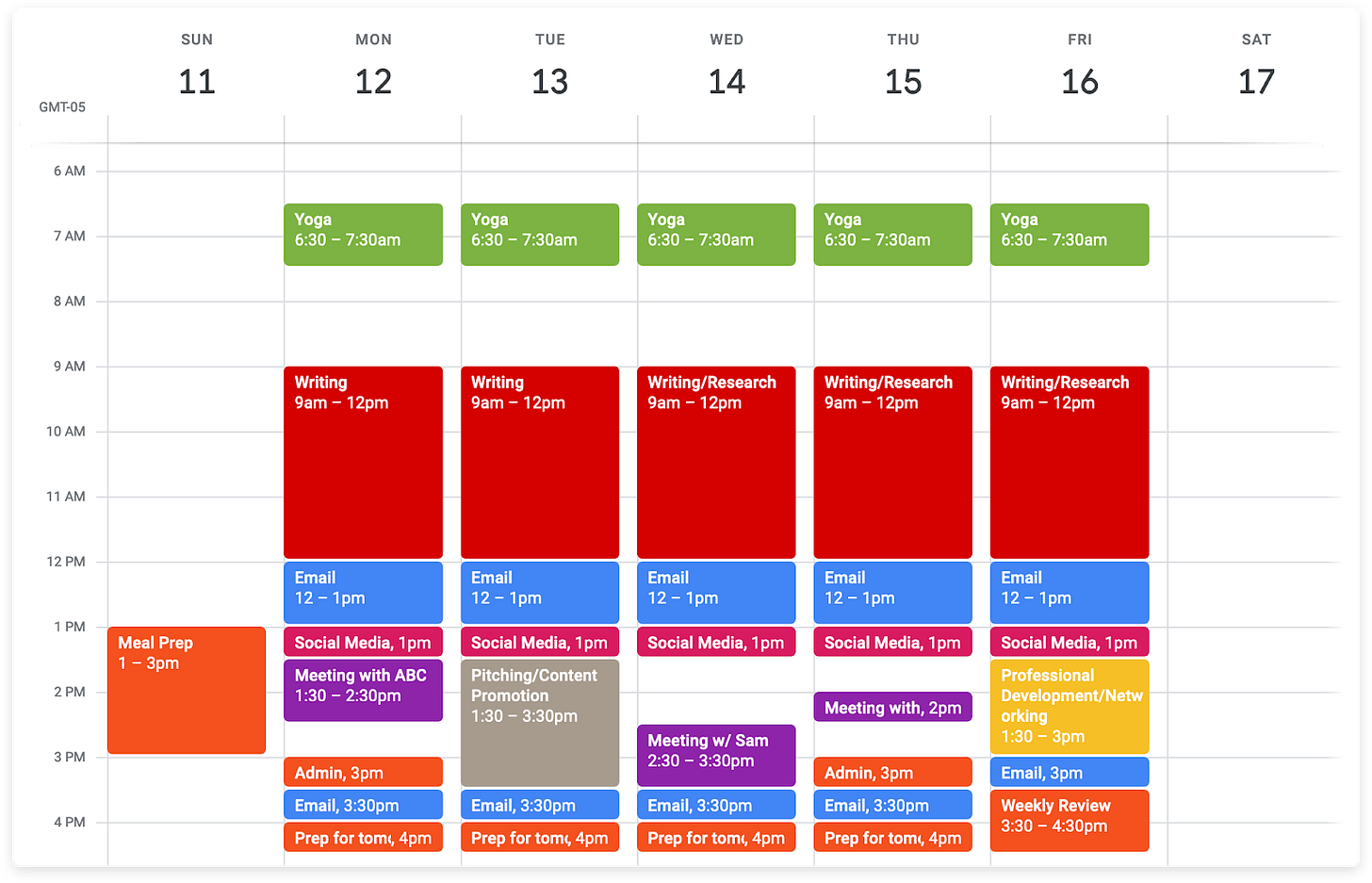Imagine: A Slack message pops up while you’re working on a report. You glance at it and think “I’ll respond later”. Five minutes later, another message arrives. Then a teammate tags you in a thread. Soon, your unread messages pile up, and instead of working, you’re playing Slack Whack-a-Mole.
Now imagine this instead: Each time a message comes in, you have no idea. Your notifications are off. When you finish your report in an hour you then open up Slack. Then by applying the 2-Minute Rule you bust through all of your miscellaneous tasks. And it’s not even lunchtime yet!

The 2-Minute Rule
For example, you open up your email and have 10 unread emails. you simply do the following:
- If you can respond to the email in <2 minutes, you respond immediately
- If you can tell it’ll take more work than 2 minutes, you put the email in a safe spot and schedule time on your calendar to respond later.
The lynchpin here is setting aside time in your calendar to follow up on those emails. We call this “shallow work”, as it’s necessary work but things like responding to emails aren’t usually deep work. We have found this works best at the beginning and end of your day, but you can choose a time that works best for you. In summary, if you’re reading email you should be responding to every email that you can in 2 minutes or less, and anything else will later become shallow work.

The 2-Minute Rule has many benefits:
- Many decisions you already know the answer to. Our intuition is actually incredibly good, so much so that research has shown our split decision is often just as effective as our thought-out decision (for more reading we’d highly recommend Blink: The Power of Thinking without Thinking)
- In business you don’t want to be the bottleneck for a decision. It’s better to be collaborative. For example, if you can respond within a day to most requests this will have a positive impact on your career.
- Switching tasks is difficult. We’ll get into this more later, but if you’re already focused on a task it’s better to complete that task rather than start a new one.
- There’s benefits to completing tasks, as illustrated by people who report being happier at work using an inbox zero strategy (having no emails in your inbox) or why you are so productive before leaving on vacation so you can enjoy it more.
The 2-Minute Rule is for more than just emails. It’s obviously useful in any messaging tool (Slack, Teams, etc.), but we have found it helpful in discussions. For example, if you need buy-in from your boss, rather than wait for your weekly 1:1 meeting, you can swing by their desk to ask them. We have found the same in building a slide, creating a process document, or even cleaning up files in a folder.
This does NOT mean you should have your notifications on and always be quickly responding. Let’s dive deeper:
How to Avoid the “Context Switching” Conundrum
Distractions are everywhere. On a computer, every notification you get takes you an average of 64 seconds to digest and return to your activity. Even worse, the average person extends the time it takes to complete a task by nearly 4x with distractions around them. While generally a notification distracts by one minute, switching tasks themselves (e.g., from email to a phone call) takes a few minutes. This is called “context switching cost”.
Over a day it’s obvious that this not only takes a toll on your productivity, but also your brain. This is where the 2-Minute Rule comes in. Here’s what we have personally done to combat this:
- Batch similar tasks together. If you’re already reading email it’s far more productive to be in only email and responding to most of your emails. Then, if you must switch tasks, you should stay focused in that context of tasks until that is complete.
- Allocate specific blocks to do certain tasks. For example, if you have a work call but also need to call your insurance company, group those together as “phone tasks”. We will actually create lists and time blocks based on the activity type. This also allows us more flexibility – if we’re on calls for an hour it’s easier to go for a walk while talking, for example.
- Set dedicated focus time. It’s incredibly effective to block out time for deep work. We set working blocks of time into our calendars each day, as well as deep work times 1-2x per week to tackle larger projects.
- Remove notifications. Just turn off your email, Slack, message, or Candy Crush notifications on both your phone and computer. If you manage your time well you’ll have time to check each of those things. And yes, if you want to build in time for Candy Crush do it! One of my favorite techniques is to build in a reward (e.g., check Instagram) after working solidly for 55 minutes.

As Cal Newport, author of Deep Work wrote:
“Efforts to deepen your focus will struggle if you don’t simultaneously wean your mind from a dependence on distraction.”
Conclusion
The 2-Minute Rule is an incredible tool that, when paired with other productivity techniques like task batching, time blocking, dedicated focus time, and removing notifications, can make you up to 4x more productive every day.
Even in writing this article, we experimented in writing in batches and 2-minute sprints, and it was highly effective to produce this whole article!
Just remember that you can do a lot in 2 minutes, especially if you’re focused and not switching from another activity. Like this article? Apply this article and take 2 minutes and leave us a comment!


